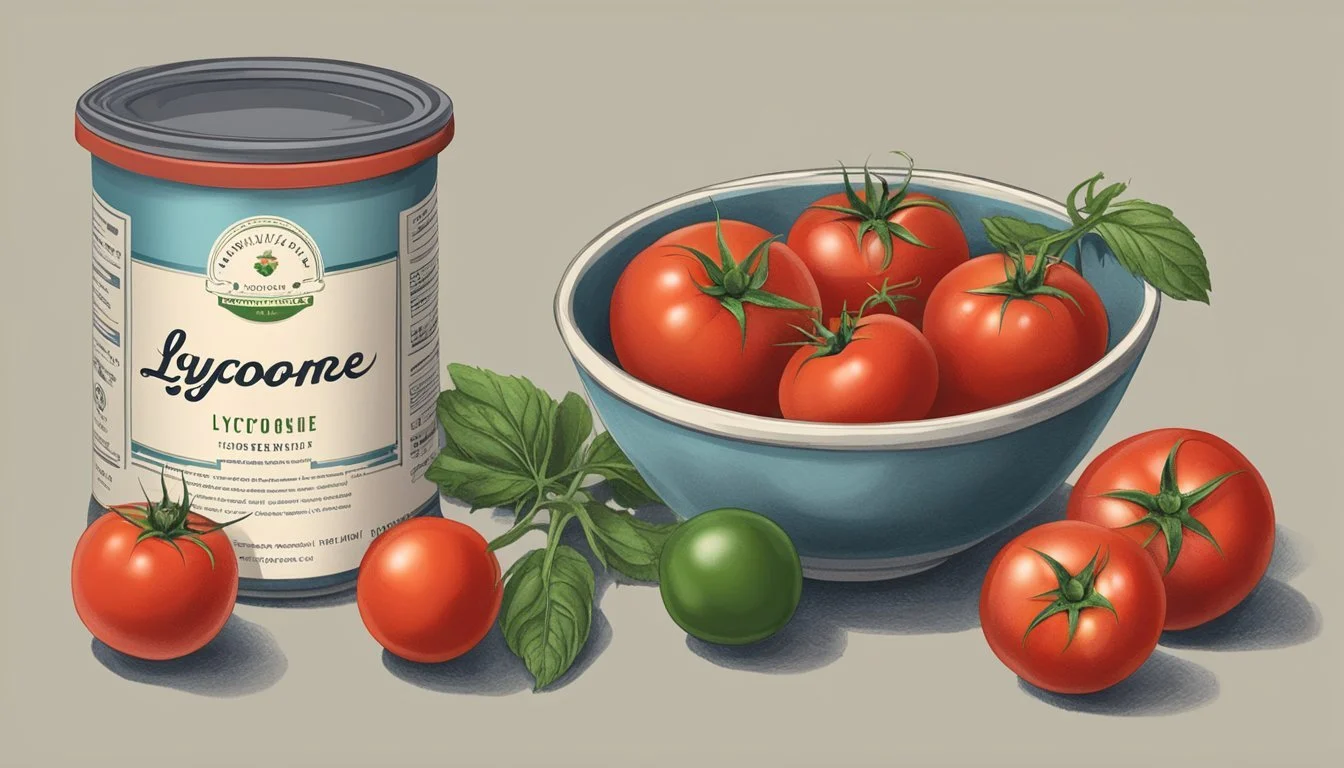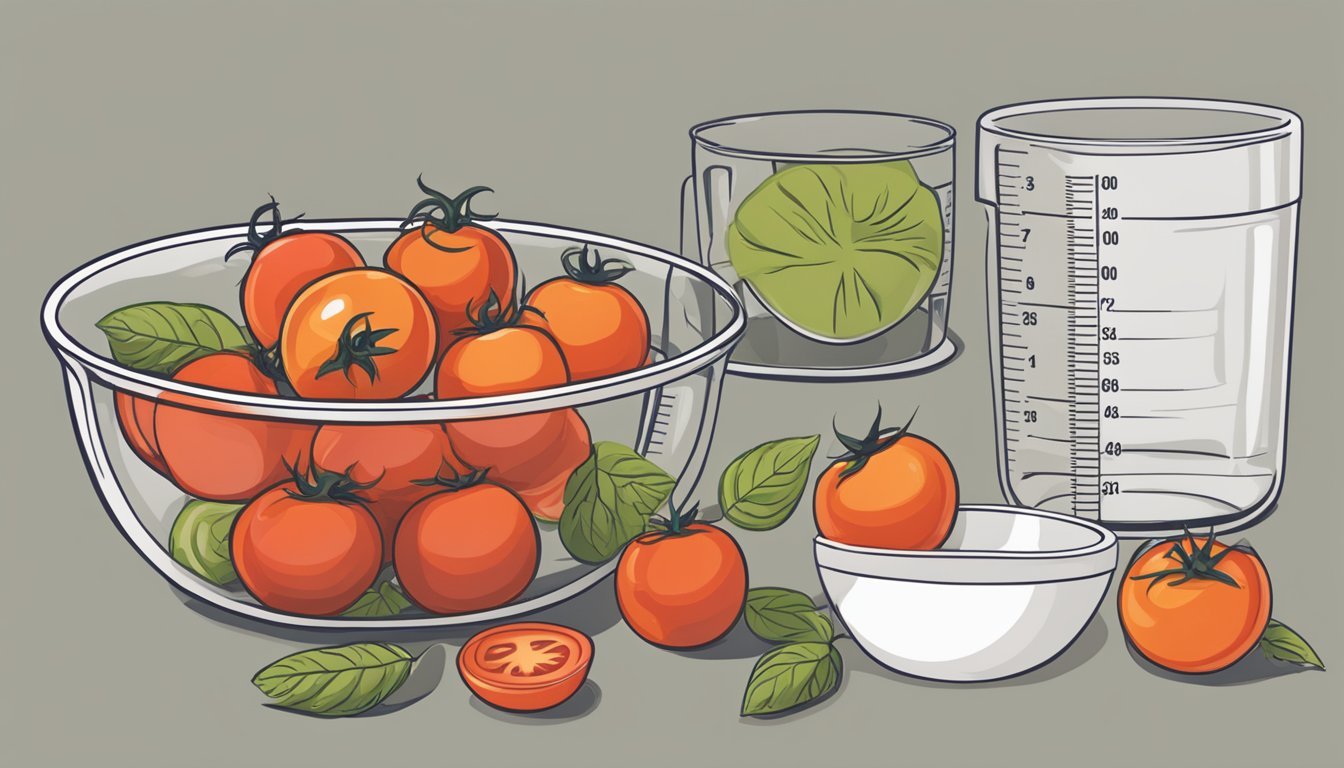How Many Servings of Tomatoes You Need for Optimal Lycopene Intake
Lycopene is a powerful antioxidant predominantly found in tomatoes, which has been linked to various health benefits, such as reducing the risk of chronic diseases including heart disease and certain types of cancer. The concentration of lycopene in tomatoes can vary depending on the type of tomato and its level of ripeness; the redder and riper the tomato, the higher the lycopene content. Moreover, the body's ability to absorb lycopene is greater from cooked tomatoes than from raw ones, as the cooking process breaks down the cell walls, releasing more of this beneficial compound.
Determining the optimal number of servings of tomatoes for adequate lycopene intake involves considering an individual's dietary patterns and nutritional needs. While tomatoes are the most significant dietary source of lycopene, providing around 80% of an average person's intake, there's no standard measure for the ideal quantity due to variations in tomato products and individual absorption rates.
It is generally encouraged to include a variety of tomato-based products such as puree, juice, and sauce in the diet, as these processed forms are particularly high in bioavailable lycopene. By incorporating both raw and cooked tomatoes in their dietary routine, individuals can maximize the potential health benefits associated with lycopene consumption.
Understanding Lycopene
Lycopene is a powerful carotenoid and antioxidant predominantly found in tomato-based products. It is well-regarded for its health benefits and is a topic of interest for those looking to enhance their dietary intake.
What Is Lycopene?
Lycopene is a naturally occurring pigment that gives certain fruits and vegetables their characteristic red color. It belongs to the family of carotenoids, which are synthesized by plants and microorganisms. Unlike some other carotenoids, lycopene does not have provitamin A activity, meaning it cannot be converted into vitamin A in the body.
Lycopene as an Antioxidant
Lycopene's role as an antioxidant is crucial in helping to protect cells from damage caused by free radicals. As an antioxidant, lycopene scavenges these potentially harmful molecules, thereby reducing oxidative stress and possibly lowering the risk of certain chronic diseases.
Dietary Sources of Lycopene
The primary dietary source of lycopene is tomato-based products. Here is a breakdown of lycopene content in various tomato forms:
Fresh tomatoes: 2.6 mg of lycopene per 100g
Small tomato (2-2/5″): 2.3 mg of lycopene
Medium tomato (2-3/5″): 3.2 mg of lycopene
Large tomato (3″): 4.7 mg of lycopene
Cup of chopped tomatoes: 4.6 mg of lycopene
Processing and cooking tomatoes tend to increase the availability of lycopene, making tomato-based products like sauces, juices, and canned tomatoes excellent sources of this potent antioxidant.
Health Benefits of Lycopene
Lycopene, a powerful antioxidant found predominantly in tomatoes, has been shown to confer several health benefits. Notably, it is connected with reduced risks of certain cancers and heart diseases, alongside other chronic health conditions.
Cancer Prevention
Research indicates that lycopene is particularly effective in helping to prevent prostate cancer. Consuming lycopene-rich foods has been associated with a decreased risk of prostate cancer, suggesting a protective benefit. Additionally, lycopene's antioxidant properties may play a role in combatting other forms of cancer by helping to neutralize harmful free radicals that can damage cellular DNA.
Heart Health
Regarding heart health, lycopene intake has been linked to a lower risk of heart disease. Its antioxidant activity can help reduce oxidative stress and lower the risk of atherosclerosis, which is the buildup of plaque in the arteries that can lead to heart attacks and strokes. By protecting against endothelial dysfunction, lycopene contributes to better blood circulation and cardiovascular health.
Other Chronic Diseases
Lycopene's impact extends beyond cancer and heart disease to other chronic conditions. Its antioxidant capabilities may provide protective effects against diseases such as osteoporosis and neurodegenerative conditions. Regular consumption of lycopene-rich foods ensures a steady supply of this beneficial nutrient, bolstering the body's defense against various chronic diseases.
Tomatoes and Lycopene Intake
Tomatoes serve as a primary source of lycopene, a potent carotenoid, with varying levels of availability influenced by the tomato's form—raw or cooked.
Raw vs Cooked Tomatoes
The bioavailability of lycopene is enhanced through the cooking process. Cooked tomatoes release more lycopene than raw counterparts because heating breaks down the tomatoes' cell walls. Therefore, eating cooked tomatoes or processed tomato-based products like sauce and paste may yield more lycopene for the body to absorb compared to the same serving of raw tomatoes.
Tomato Products and Lycopene Content
Tomato products, particularly those that are cooked or processed, typically contain higher lycopene concentrations. For instance, tomato paste and tomato sauce are dense sources, with regular consumption linked to health benefits. Tomato juice is another practical option for lycopene intake, offering significant amounts despite its potential sodium content. It is notable that integrating olive oil with tomato products can facilitate better lycopene absorption due to its fat content.
Other Lycopene-Rich Foods
While tomatoes are a major source, lycopene is also found in other red and pink fruits. Watermelon and grapefruit are notable for their lycopene content. These can be considered in a varied diet for those seeking to increase their lycopene intake from different sources, apart from tomato-derived products.
Recommended Lycopene Intake
Lycopene is an important nutrient found predominantly in tomatoes, and its intake is linked to numerous health benefits. Understanding the recommended daily intake of lycopene can help individuals maximize its nutritional potential.
Daily Servings of Lycopene
The intake of lycopene varies depending on dietary sources, but it is generally recommended that individuals consume between 2 to 30 mg per day. For example, one medium tomato can provide approximately 3.2 mg of lycopene, making it one of the richest dietary sources. Consuming a variety of tomato-based products, such as sauces or juices, can contribute significantly to daily lycopene intake.
Supplementation vs Diet
While lycopene is available as a dietary supplement, obtaining it from food sources, especially tomato products enhanced with oil, is typically more beneficial. This is due to the fact that oil aids in the absorption of lycopene. Supplements might be a consideration in certain scenarios but it's essential to consult a healthcare professional before starting any new supplement regimen.
It is important to note that high doses of supplemental lycopene are not advisable for individuals with certain health conditions, such as existing prostate cancer, as it may worsen the effects.
Lycopene Absorption and Utilization
Lycopene, a potent antioxidant found predominantly in tomatoes, is better absorbed and utilized by the body under specific conditions. Dietary factors and meal composition have a profound impact on lycopene bioavailability.
Factors Affecting Absorption
Dietary Fat: The presence of dietary fat significantly boosts lycopene absorption. A minimum of 10 grams of fat is recommended for meals containing processed tomato products, while at least 15 grams may be required with raw tomato intake.
Food Processing: Cooking and processing tomatoes break down the cell walls, increasing lycopene availability. For example, lycopene in tomato paste is more readily absorbed than lycopene in raw tomatoes.
Fiber Content: Higher fiber content in the diet can potentially reduce the absorption rate of lycopene due to fiber's ability to bind with nutrients.
Maximizing Lycopene Benefits
Healthy Fats: Including healthy fats, such as olive oil, with tomato-based foods can augment lycopene absorption into the bloodstream.
Meal Composition: A balanced meal that integrates lycopene-rich foods with adequate healthy fats ensures better utilization of lycopene's antioxidant properties.
Consistency: Regular consumption of lycopene-rich foods rather than sporadic intake is likely more beneficial for maintaining tissue lycopene levels.
Lycopene in the Prevention of Diseases
Lycopene, a potent antioxidant found primarily in tomatoes, plays a significant role in mitigating various health risks, particularly in the prevention of several diseases by mitigating oxidative stress and reducing inflammation.
Cardiovascular Health
Lycopene's efficacy in bolstering cardiovascular health is noteworthy. Studies associate the intake of lycopene-rich tomato products with support for healthy cholesterol levels and a reduced risk of cardiovascular diseases, including heart disease and stroke. Consuming one or more servings daily can be linked with a reduction in cardiovascular disease risk by less than 30%. Lycopene achieves its beneficial effects by combating free radicals and reducing oxidative stress, which are factors contributing to the development of heart-related ailments.
Cancer Risk Reduction
When considering cancer, lycopene's role is particularly pronounced in reducing the risk of prostate, lung, and stomach cancers. The consumption of tomatoes and their derivatives has been consistently correlated with lower incidences of these cancers. This relationship is attributed to lycopene's antioxidative properties that may help in controlling the growth of cancer cells and offering a protective effect against cancer development.
Other Diseases and Conditions
Beyond its cardiovascular and cancer-preventive benefits, lycopene may have a broader impact on health by potentially lessening the severity of other diseases and conditions. As an antioxidant, it may help in reducing systemic inflammation, a common precursor to various chronic diseases. However, more research is needed to establish firm conclusions about lycopene's effects on other specific health conditions.
Nutritional Profile of Tomatoes
Tomatoes are a nutrient-dense food, providing a rich blend of vitamins, minerals, and phytochemicals, including lycopene—a carotenoid responsible for their red color.
Vitamins and Minerals in Tomatoes
Tomatoes are an excellent source of vitamin C, vital for immune function and skin health, with an average-sized tomato offering about 25% of the daily value. They also contribute a significant amount of vitamin K, important for blood clotting and bone health, and contain beta-carotene, which the body converts into vitamin A.
Vitamin C: Essential for immune health and collagen synthesis.
Vitamin K: Critical for blood coagulation and bone formation.
Beta-Carotene: A precursor for vitamin A, crucial for vision and immune function.
In addition to these vitamins, tomatoes supply essential minerals such as potassium, which is necessary for blood pressure regulation and proper nerve and muscle function.
Other Nutrients and Phytochemicals
The primary phytochemical in tomatoes is lycopene, with approximately 2.5 mg of lycopene found per 100 grams of fresh tomatoes. Not only does lycopene give tomatoes their characteristic red color, but it is also associated with a lower risk of certain chronic diseases.
Lycopene: Antioxidant linked to reduced risk of certain cancers and heart disease.
Fiber: Tomatoes provide a mix of soluble and insoluble fiber, which aids digestion and may contribute to heart health.
Tomatoes are not just about lycopene; they also house a variety of other phytochemicals, such as flavonols like quercetin, which have their own health benefits. Together with fiber, these compounds work to support overall health and may protect against various diseases.
Potential Health Risks and Considerations
When incorporating tomatoes into a diet for their lycopene content, one must consider the possibility of side effects and interactions with medications, as well as allergies that some individuals may have to lycopene.
Interactions and Side Effects
Lycopene, the compound that gives tomatoes their red color, is generally considered safe when consumed in food amounts. However, taking lycopene in dietary supplement form may cause adverse reactions. It's important to note that lycopene can interact with certain medications, including blood thinners and blood pressure drugs. Individuals should consult with a healthcare provider to understand potential interactions. Some reported side effects of excessive lycopene consumption include:
Nausea
Diarrhea
Indigestion
Bloating
These side effects are relatively uncommon and typically associated with high doses of lycopene supplements, not with lycopene intake from tomatoes.
Lycopene and Allergies
While rare, allergies to lycopene itself are possible. Symptoms of an allergic reaction can include:
Hives
Itchy skin
Swelling
Anaphylaxis in severe cases
Individuals with known allergies should approach lycopene-rich foods and supplements with caution and seek medical advice before integrating them into their diet. Recognizing the symptoms of an allergy can be critical in avoiding severe reactions.





